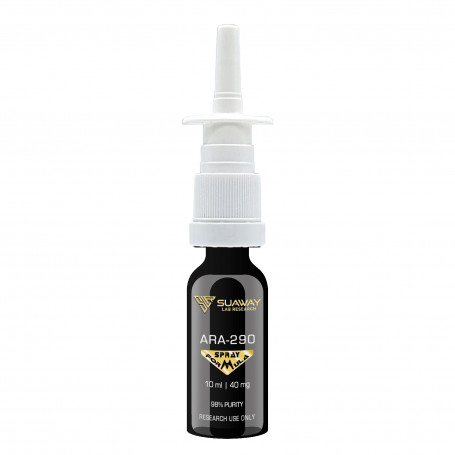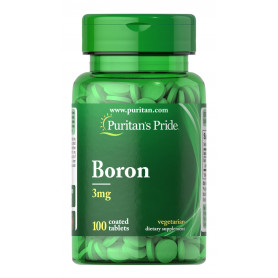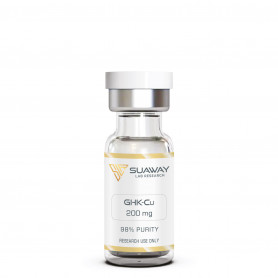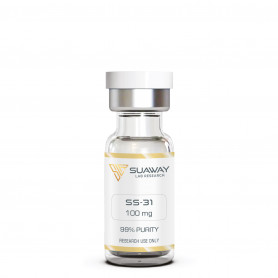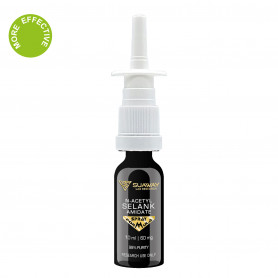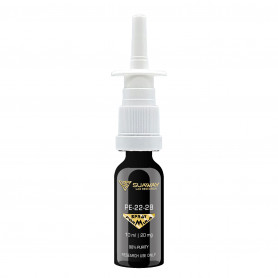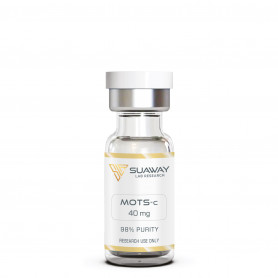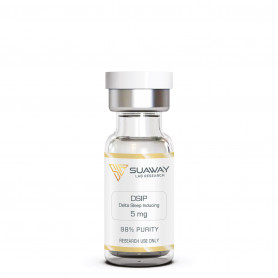ARA-290 - 10ml/40mg
It has been shown that the erythropoietin variation known as ARA-290 may reduce the activity of inflammatory pathways by using paracrine signalling and the innate repair receptors. According to research, ARA-290 may help lower HbA1c levels, improve cholesterol, modify peripheral neuropathies and general neuropathic pain, promote wound regeneration, and alleviate general neuropathic pain.
- Cardiovascular disorders
- Diabetic macular edema
- Diabetic neuropathies
- Neuropathic pain
- Small fiber neuropathy
- Rheumatoid arthritis
- Diabetic nephropathies
- Non-alcoholic steatohepatitis
- Inflammatory bowel diseases
- Systemic lupus erythematosus
- Wounds
Total Spray: 82 (490 mcg per spray)
FRESHLY PREPARED SOLUTION
Beschreibung
STRUCTURE
Sequence: : H-Pyr-Glu-Gln-Leu-Glu-Arg-Ala-Leu-Asn-Ser-Ser-OH
Molecular Formula: C51H84N16O21
Molecular Weight: 1253.3 g/mol
CAS: 1208243-50-8
Peptide Purity: greater than 98%
Other details: No TFA Salt
Storage: This product must be stored at 4°C. No suitable for freezing.
DESCRITPION
ARA-290 is a short peptide that was produced from the beta helix region of the erythropoietin protein (EPO). It has been known for a long time that EPO has activities that go beyond only stimulating the generation of red blood cells in the bone marrow. It has been shown that the glycoprotein, which is produced in the kidney, may modify blood pressure, improve cell survival, encourage the creation of new blood vessels, and have neuroprotective benefits in diabetic neuropathy patients. ARA-290 has the same neuroprotective and pain relieving benefits as EPO, but it does so without increasing the creation of red blood cells. ARA-290 has finished the phase II trials and is getting ready to join the phase III trials for a number of applications in diabetes and the autoimmune sarcoidosis. These studies will look at a wide range of applications. At the moment, the peptide is of active interest for its capacity to reduce neuropathic pain; nevertheless, it is also being investigated as a possible immune modulatory medication, as a potential activator of wound healing in chronic diabetes, and as a potential therapy for systemic lupus erythematosus (lupus or SLE).
Ischemia of the retina, which may be brought on by a variety of different disease processes, is the most common cause of blindness in industrialised countries. It would be a significant step toward alleviating the burden of illness if there was a technique to either prevent damage to the retinal epithelial cells or stimulate their regeneration once they have been damaged. According to findings from studies conducted on mice, ARA-290 has the potential to shield endothelium colony forming cells from the destructive effects of inflammation. ARA-290 is able to do this, and as a result, it prolongs the life of cells and assists endothelial colony forming cells (ECFCs) in their efforts to repair and construct blood vessels.
According to the findings of other research conducted on mice, ARA-290 promotes an increase in the proliferation, migration, and lifespan of ECFCs across the vasculature. It would seem that ARA-290 also improves the homing ability of ECFCs, making it easier for these cells to zero in on damaged parts of the vasculature and begin the healing process. There is reason to believe that this function may not only aid to augment the effects of endogenous ECFCs, but may also help to improve the capacity of transplanted ECFCs to rebuild vasculature and restore blood flow to ischemic tissue. This is the aim. If ARA-290 is effective in the case of ECFC transplants, it might open up a whole new field of medical treatment by making it possible for functioning cells to be transplanted successfully for the purpose of tissue repair, hormone synthesis, protein building, and many other purposes.
Research conducted on mice demonstrates that ARA-290 may suppress the activation of macrophages, which in turn helps to enhance the survival of transplanted islet cells. Endocrinologists have been searching for years a diabetes therapy, which they believe to be the transplanting of healthy islet cells that produce insulin into diabetic patients. Islet cells, in contrast to exogenous insulin, give a control of blood sugar that is far more physiological, and as a result, the problems that are often encountered even in well-controlled diabetes are greatly reduced. Unfortunately, islet cells do not remain viable after transplantation for an extended period of time; as a result, the treatment has been almost completely discontinued. However, with the development of ARA-290, there is a possibility that this may change. It has been shown via research conducted on mice that the potential of the peptide to inhibit inflammatory cytokines such as IL-6, IL-12, and TNF-alpha significantly increases the amount of time that transplanted islet cells are able to survive.
It would seem that the capacity of ARA-290 to protect against typical inflammatory reactions is mediated through the binding of the peptide to the tissue-protective receptor (TPR). This increases the level of tissue protection and helps to control the immune system. EPO also binds to the TPR, but because to the many adverse effects it has on the cardiovascular system and the haematological system, it is no longer considered a viable therapy option in many or even the majority of clinical scenarios. Peptides such as ARA-290 aid to minimise apoptosis and cut down on the quantities of damaging inflammatory cytokines. They do this by binding to the TPR and not encouraging some of the other effects that EPO has. The end effect is enhanced tissue regeneration as well as protection for the tissues. Both of these characteristics contribute to a lower risk of morbidity and mortality, accelerated wound healing, less production of scar tissue, and a more rapid return of function after an injury.
There are several different types of immune cells that express the TPR. These cells include macrophages, dendritic cells, mast cells, and lymphocytes (particularly T-cells). Mounting evidence points to the possibility that ARA-290 and other peptides with a similar structure may bind to the TPR found on immune cells and directly alter the activity of those cells.
The activation of the TPR in macrophages by ARA-290 results in a considerable reduction in the excretion of proinflammatory cytokines such as TNF-alpha and IL-6. It is interesting to note that although if this downregulation of the immune response leads to lower pathogen clearance in some conditions, it still serves to minimise the severity of illness and aids in preventing the establishment of long-term disease processes. Research has also shown that activation of TPR inhibits the route of macrophage chemokine release. This, in turn, decreases the influx of inflammatory cytokines while simultaneously promoting the recruitment of tissue macrophages (resident macrophages) to regions of damage. It seems that this will result in enhanced tissue repair while simultaneously reducing the inflammatory adverse effects.
According to the findings of other studies, ARA-290 may be able to help change the way in which antigen is presented by dendritic cells, and by doing so, it may help change the adaptive immunity that leads to long-term resistance against infections to which the body has previously been exposed. Remember that adaptive immunity is the major driver of organ and tissue rejection after transplant. This may seem like a very terrible thing on the surface, but it is vital to keep in mind that adaptive immunity plays this role. The capacity to modify the process and fine-tune it may assist to lower the risk of graft rejection in a variety of transplant procedures, including kidney, heart, bone marrow, and experimental transplants.
A modulator of the immune system such as ARA-290 may be used in a variety of contexts. The context of colitis has maybe the greatest amount of potential. Colitis, which may be the outcome of an infection, can also be the result of a chronic autoimmune illness, such as is found in Crohn's disease and ulcerative colitis. Both of these conditions are characterised by persistent diarrhoea and abdominal pain. At this time, the only therapies available for autoimmune colitis are injectable drugs that come with a wide variety of negative side effects. Inflammatory bowel disease affects a large number of individuals, and it would help a great number of those people if there was a way to treat colitis with immune modulators that were more specific.
The therapy of systemic lupus erythematosus is another possible use of the immune-modulatory properties of ARA-290 (SLE). According to studies conducted on mice, the administration of ARA-290 reduces the levels of autoantibodies (namely ANA and anti-dsDNA), which are used as diagnostic markers for SLE and as indications of the severity of the condition. In addition, ARA-290 lessens the damage done to the kidneys, which is a common contributor to morbidity and death in SLE patients. These results point to the possibility that ARA-290 might be the first medication for SLE that is really targeted.
It has been known for a long time that the immune system plays a part in the experience of pain (also known as nociception), but it has been difficult to find impact regulators for this mechanism of pain. In particular, the immune system plays a significant influence in the development of neuropathic pain, which refers to pain that originates in the nerves and may be caused by conditions such as diabetes. Targeting the innate repair receptor (IRR), which has been shown in studies to reduce inflammation and improve neuropathic pain, is a treatment method that is notoriously difficult to regulate in patients who suffer from neuropathic pain. It is well established that ARA-290 has an effect on this receptor; however, recent findings show that it may also be able to block the activity of TRPV1 channels. The TRPV1 channel, which is also known as the capsaicin receptor, is responsible for the feeling of heat and the accompanying searing sensation that is so often described in neuropathic illness. Because ARA-290 is able to operate on this receptor, it has the potential to be effective in the treatment of pain associated with conditions such as diabetes, multiple sclerosis, chemotherapy, and amputation.
Loss of small nerve fibres is a complication that may arise as a result of some autoimmune disorders, most notably sarcoidosis and diabetes. This disorder, which is also referred to as small fibre neuropathy, is brought on when the skin's little fibres, which are responsible for sensations of warmth and pain, begin to degrade. Symptoms, which range in severity, can be of the pins and needles type or give the sensation of sand in the shoe or a wrinkle in a sock. The pain is usually transient, but is severe and occurs multiple times throughout a day. In the most severe instances, the pain lasts for an extended period of time and often takes the form of a scalding feeling. Research in people suffering from small fiber nerve loss shows that treatment with ARA-290 increases the number of small nerve fibers and reduces pain significantly. This suggests that ARA-290 may offer an effective treatment for nerve damage seen in diseases like sarcoidosis, diabetes, thyroid dysfunction, celiac disease, HIV, and more.
In 2016, Araim Pharmaceuticals announced that the FDA had granted it orphan drug status to explore the efficacy of daily cibinetide in the treatment of patients with painful sarcoid neuropathy. A year later, Chief Science Officer Michael Brines, along with several others, published a paper revealing the benefits of ARA-290 in the treatment of peripheral nerve pain and small nerve fiber pain.
There even appears to be a role for ARA-290 in accelerating impaired wound healing in mice with diabetes, suggesting that the peptide may help to stave off the amputations and chronic ulcers that many diabetics suffer later in life.
While ARA-290 has been of primary interest for its novel mechanism of controlling neuropathic pain, the peptide is also of interest for its immune modulating properties, for its ability to stimulate wound repair, and as a potential means of protecting vasculature during ischemic insults. The most advanced area of research surrounds the ability of ARA-290 to modulate neuropathic pain. The peptide is currently in phase II and III trials for the treatment of diabetic neuropathy and sarcoid neuropathy respectively. There is also interest in using the peptide as a treatment for systemic lupus erythematosus and in the pain syndromes associated with multiple sclerosis, HIV, celiac disease, and more. There is burgeoning interest in using ARA-290 as a potential disease modifying agent in inflammatory bowel disease as well.
REFERENCES
M. Brines et al., "ARA 290, a Nonerythropoietic Peptide Engineered from Erythropoietin, Improves Metabolic Control and Neuropathic Symptoms in Patients with Type 2 Diabetes" [Molecular Medicine]
A. Bitto et al., "Activation of the EPOR-β common receptor complex by cibinetide ameliorates impaired wound healing in mice with genetic diabetes" [ScienceDirect]
Araim Pharm. "Study of Efficacy of ARA 290 on Corneal Nerve Fiber Density and Neuropathic Symptoms of Subjects With Sarcoidosis" [ClinicalTrials.gov]
H. Chen et al., "Therapeutic effects of nonerythropoietic erythropoietin analog ARA290 in experimental autoimmune encephalomyelitis rat" [PubMed]
Leiden University Medical Center "Cognitive and Neural Effects of ARA290 (CONEARA)" [ClinicalTrials.gov]
O.E.O'Leary et al., "The vasoreparative potential of endothelial colony-forming cells in the ischemic retina is enhanced by cibinetide, a non-hematopoietic erythropoietin mimetic" [PubMed]
G.Hache et al., "ARA290, a Specific Agonist of Erythropoietin/CD131 Heteroreceptor, Improves Circulating Endothelial Progenitors' Angiogenic Potential and Homing Ability" [PubMed]
B.Peng et al., "Erythropoietin and its derivatives: from tissue protection to immune regulation" [Nature]
B.Huang et al., "Non-erythropoietic erythropoietin-derived peptide protects mice from systemic lupus erythematosus" [PubMed]
M. van Velzen et al., "ARA 290 for treatment of small fiber neuropathy in sarcoidosis" [PubMed]
DISCLAIMER
This product is intendend for lab research and development use only. These studies are performed outside of the body. This product is not medicines or drugs and has not been approved by the FDA or EMA to prevent, treat or cure any medical condition, ailment or disease. Bodily introduction of any kind into humans or animals is strictly forbidden by law. This product should only be handled by licensed, qualified professionals.
All product information provided on this website is for informational and educational purposes only.

